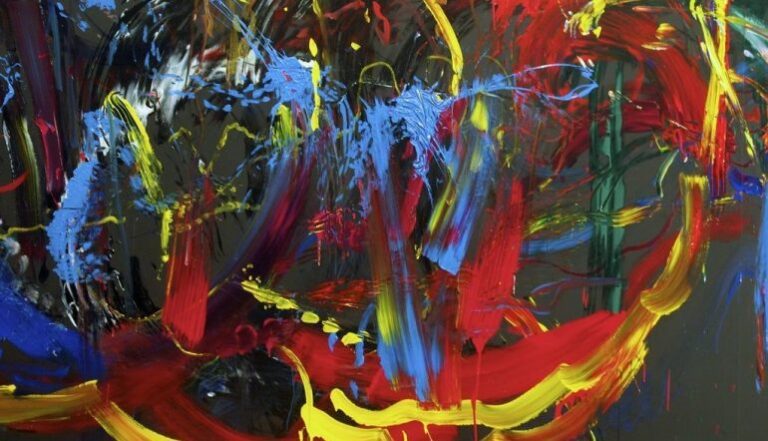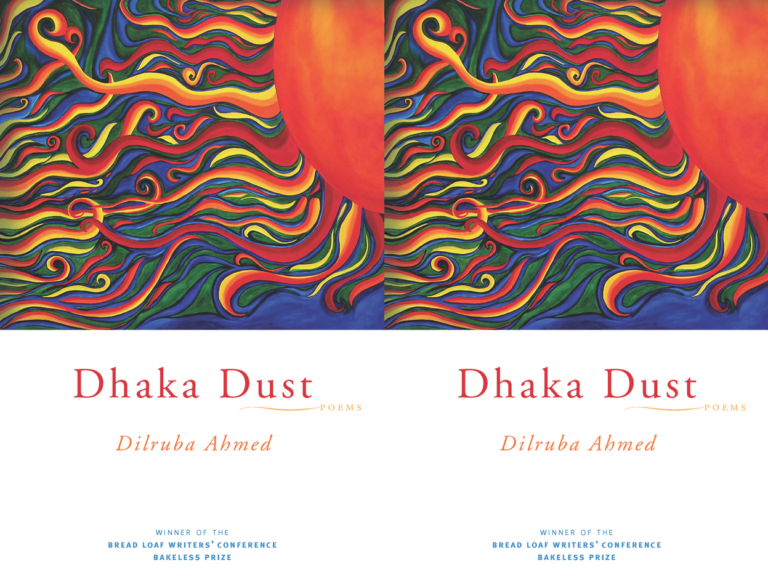The Books We Teach #9: Interview with Danielle Dutton
The Books We Teach series will feature primary, secondary, and post-secondary educators and their thoughts about literature in the face of an evolving classroom. Posts will highlight literary innovations in teaching, contemporary literature’s place in pedagogy, and the books that writers teach. In the spirit of educational dynamism, we encourage readers to contribute their thoughts in the comments section.
Danielle Dutton is the author of Attempts at a Life (Tarpaulin Sky) and S P R A W L (Siglio Press), a finalist for the Believer Book Award. Her work has appeared in Harper’s, BOMB, NOON, The Collagist and elsewhere, and anthologized in A Best of Fence and Where We Live Now: An Annotated Reader. She has taught in the Jack Kerouac School of Disembodied Poetics at Naropa and is now an assistant professor at Washington University in St. Louis. In addition to teaching and writing, she founded and edits Dorothy, a publishing project, “dedicated to works of fiction or near fiction or about fiction, mostly by women.”
Here, Danielle and I discuss her new class “The Irregularity of Form,” Lena Dunham’s giant book advance, her perverse affinity for assigning “Kew Gardens” to undergrads, and useful thorns in class conversation.
Tell us a bit about the First Books class you taught last year at Washington University, and why you chose to teach it. What aspects of today’s changing publishing world did you find most important to explore with your students?
That was a course I put together hoping to find a way to marry my experiences in publishing with my experiences as a writer/reader/teacher—for myself and for my students. Basically: how can we talk about publishing without talking about how to get published? I didn’t really want us to have a conversation about getting published, getting an agent, or any of those things that I’m not sure MFA students should be overly concerned with while they’re moving through a program, as they’re hopefully immersed in a more utopian space of reading and writing and risk taking.
What I did was pick a number of recently published (well, within the last ten years) first books. First books because, for most writers, the experience of being published for the first time is so intense, and also because my students are themselves, most of them, at work on their own first books. I chose the books in large part based on where they had been published, so that we could have a wide-ranging conversation about types of publishers and publishing experiences.
For example, we read Sarah Shun-lien Bynum’s amazing Madeleine Is Sleeping (published in 2005 by Harcourt, and a finalist for the National Book Award), and then moved on to Jeremy M. Davies’s insanely overlooked Rose Alley (published in 2009 by Counterpath, an indie press based in Denver). I also interviewed each author whose first book we read, and they generously responded to questions such as whether this was the first book they’d written or the first that got published, what they learned about publishing by being published, what they wish they’d already known, etc. I also had editors visit us to talk about what they do day-to-day, and the specific challenges of working at a non-profit press versus a commercial press, for example. So in addition to talking about each book as a book, we were also always talking about the writer’s experience being published and about the press that published them.
In terms of the changing face of publishing: we did talk a bit about how the business model of big publishing is in flux. During the semester Random House and Penguin merged; bookstores were closing; and we talked about the growing presence of indie presses—Graywolf, Melville House, Coffee House, Two Dollar Radio—in more mainstream media. Also that semester Lena Dunham got that huge advance for her advice book, so we discussed that and read a Salon.com article which begins with the thesis that, you know, nothing against Lena Dunham, but advances this size are part of what’s wrong with publishing today. In terms of the whole digital, is-this-the-end-of-books-as-we-know-them? side of things: I left that largely up to the students, who gave fantastic presentations on everything from online book reviewing to trends in cover design, copyright laws, self publishing, etc.
You’re teaching a class called “The Irregularity of Form” this coming spring at Wash U. Could you elaborate on what “irregular forms” means, in this instance? What are a few of the works that you are looking forward to teaching as part of this course?
I love teaching new classes. Keeps me on my toes.
The “irregular forms” part has a few different meanings for me: the history of fiction itself as a history of irregularity, parody, experimentation, play; the irregular shapes of interesting things: sentences, paragraphs, narrative spaces; and the possibilities inherent in the machine of the book itself.
We’re reading: Bhanu Kapil’s Humanimal, Tom Phillips’s A Humament, Patrik Ouředník’s Europeana: A Brief History of the Twentieth Century, Virginia Woolf’s To the Lighthouse, and a bunch of irregularly shaped stories, books in boxes, hypertext.
Can you recall a work that elicited a wholly (or mostly) positive response from your students? What about this work caused such collective enthusiasm, do you think?
I have to admit, I’m always a tiny bit disappointed when met with an entire class of positive responses. It doesn’t happen all that often, but it has happened (and more than once) with a few texts: Wells Tower’s “Everything Ravaged, Everything Burned,” Stanley Elkin’s “A Poetics for Bullies,” César Aira’s An Episode in the Life of a Landscape Painter. I’m not disappointed in the works, of course, all of which I pretty much love; I just find it useful for there to be a thorn in the conversation—a rub.
It’s of course much worse to come into a class where everyone is in agreement in their loathing, or, even worse, utter dismissal. There’s not a lot to do with that. Or, there’s too much. It’s hard to face. That happens. It happens a lot with Virginia Woolf and undergrads, which is terribly depressing for me. Yet I continue to assign “Kew Gardens” nearly every semester, perversely!
What draws you to a text, pedagogically speaking? Do any works come to mind that are as enjoyable to teach as they are to read?
It depends. When I’m teaching an undergrad intro course, I’m often looking for something that will demonstrate, in some interesting or problematic way, the possibilities inherent in a very specific aspect of fiction writing: point of view (George Saunders’s “Victory Lap” is great), setting (Amina Cain’s “Aviary” has provoked good conversations), or plot (I like teaching Chekhov alongside O. Henry.).
With grad students, it’s more open. The books that have stuck with me since my own grad-school days are the ones I didn’t quite know how to talk about at first: Georges Perec’s Life: A User’s Manual, anything by Gertrude Stein, Kobo Abe’s The Box Man. Now, as an instructor, I am especially pleased when it feels like we’re figuring out together how to talk about a book. It’s quite special when that happens. I’ve had wonderful conversations recently about Kathryn Davis’s Duplex, for example, and Jean Toomer’s Cane, both of which defy easy articulation.
When you aren’t professing and writing, you are running Dorothy, a publishing project. Could you tell us about a few recently released Dorothy books? What about any projects in the works? Does Dorothy, in any way, cross into your pedagogical pursuits or is the press completely disparate from your life as a professor? Did Dorothy factor into any of your First Books discussions last year?
We publish two books every fall and just put out Amina Cain’s Creature and Renee Gladman’s Ana Patova Crosses a Bridge. (This is the third in her series about the invented city-state of Ravicka.) And, yes, as the reviews of those two are coming in, I’m fast at work on next year’s books. One of them I can’t talk about yet; the other I am thrilled to talk about: it’s a debut novel by an American writer in Berlin named Nell Zink. It’s smart and hilarious and gripping and strange. I can’t wait for people to read it. It’s called The Wallcreeper.
When teaching I do sometimes talk about writing/books from a publisher’s perspective. And of course my experiences running Dorothy and working at Dalkey Archive (where I did production and design) are what formed the idea for the First Books class. Basically: this stuff is interesting to me, and I figure it might be interesting to students, to others who care about a literary culture beyond their own work.
I did teach one Dorothy book last year: Renee Gladman’s Event Factory. I didn’t mention ahead of time that I’d published it, but my savvy undergrads figured it out. I don’t really know why I thought they wouldn’t, or why I didn’t mention it up front. Maybe it felt a bit like teaching my own book (which I would never do). But of course it’s not really like that, and the fact was I couldn’t think of a better book to teach in order to talk about what I wanted to talk about with them.
Might you be able to tell us a little about the book you’re finishing now? When/over what time period did you work on the book? Was your writing process divorced from your teaching process or did the former and latter interact in any ways?
It’s a novel about a seventeenth-century writer and eccentric named Margaret Cavendish. I began it back when I was getting a PhD at Denver. I worked on it fitfully for a few years, trying to figure it out (also working full time in publishing, having a baby, etc.), and then with much more attention in the past three years.
My instinct is to say that my writing and my teaching have little to do with each other. One is so public and collaborative, the other so private. Yet, how can I be sure? How could I know what might filter through without my being aware of it? I can say that becoming a better reader of other people’s writing (through teaching and also editing for Dorothy) has made me a more astute reader of my own work, which is essential, of course. So likely the rewriting part of my practice has some real relationship to the other stuff I do.
But the initial flurry of energy that comes when something is new—that “pure” writing, before you even really know what you have—seems to me to be (at least it feels like this) wholly unconnected to anything else I have going on at the time: my job, my marriage, bills, the kid, my messy house, etc. It’s a weird, dim, secret, bright, selfish place, and probably it has to be.


